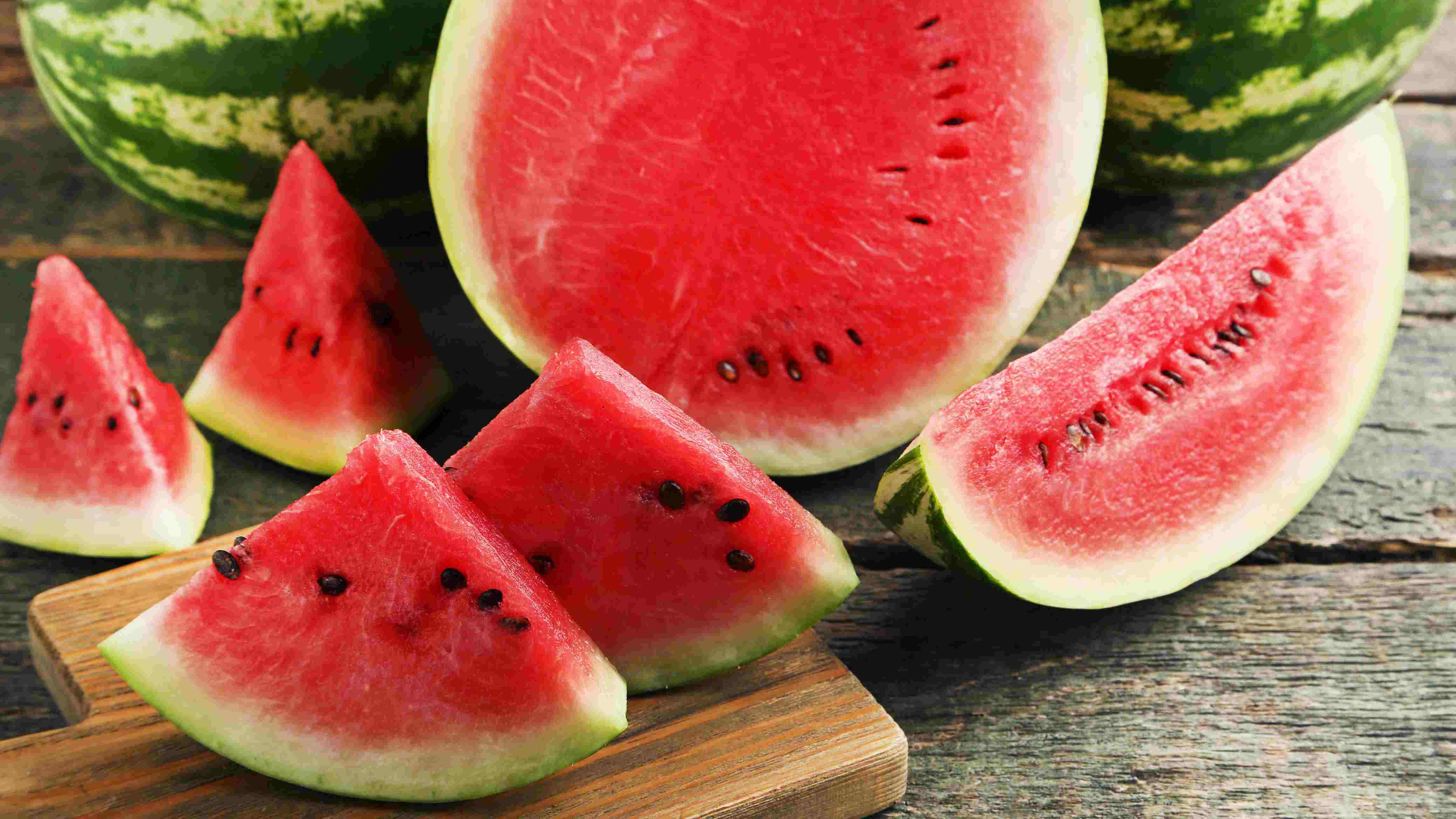Home>Gardening News and Trends>Latest News>How Many Calories In Vegetables Soup


Latest News
How Many Calories In Vegetables Soup
Modified: January 22, 2024
Looking for the latest news on how many calories are in vegetable soup? Find out the nutritional facts and stay informed about your healthy eating choices.
(Many of the links in this article redirect to a specific reviewed product. Your purchase of these products through affiliate links helps to generate commission for Chicagolandgardening.com, at no extra cost. Learn more)
Table of Contents
Introduction
Welcome to the delicious and nutritious world of vegetable soup! Whether you’re a fan of hearty minestrone, flavorful tomato-based soups, or creamy pureed creations, vegetable soup is a delightful and versatile dish that offers a plethora of health benefits. Packed with an array of vitamins, minerals, and fiber, vegetable soups are a fantastic way to nourish your body and satisfy your taste buds.
What makes vegetable soup even more appealing is its versatility. You can easily customize it to suit your preferences by adding different vegetables, herbs, and spices. Whether you’re a herbivore, vegan, vegetarian, or simply looking to incorporate more plant-based meals into your diet, vegetable soup is an excellent option that won’t disappoint.
Not only is vegetable soup easy to prepare, but it also provides a great opportunity to use up any leftover vegetables in your fridge before they go to waste. So, let’s dive into the wonderful world of vegetable soup and explore the incredible benefits and nutritional value it offers.
Benefits of Vegetable Soup
Vegetable soup is a nutritional powerhouse, offering a wide range of benefits to support your overall health and well-being. Let’s explore some of the key advantages of incorporating vegetable soup into your diet:
- Rich in Nutrients: Vegetable soup is packed with essential vitamins, minerals, and antioxidants that are vital for maintaining optimal health. By including an assortment of vegetables in your soup, you can benefit from a diverse array of nutrients that contribute to a strong immune system, healthy skin, improved digestion, and enhanced energy levels.
- Weight Management: If you’re looking to shed some pounds or maintain a healthy weight, vegetable soup can be a great ally. It is low in calories, high in fiber, and offers a high water content, all of which promote feelings of fullness and help curb appetite. By incorporating vegetable soup into your meals, you can reduce overall calorie intake while still enjoying a satisfying and nutritious dish.
- Hydration: Staying hydrated is crucial for proper bodily functions, and vegetable soup can contribute to your daily fluid intake. With its high water content, vegetable soup helps to replenish fluids and maintain hydration, especially during hot weather or when recovering from illness.
- Gut Health: The fiber found in vegetables helps to support a healthy digestive system. Vegetable soup, with its blend of fiber-rich ingredients, can promote regular bowel movements, prevent constipation, and support a healthy gut microbiome.
- Heart Health: Research has shown that a diet rich in vegetables is associated with a decreased risk of heart disease. By incorporating vegetable soup into your regular meals, you can benefit from the abundance of heart-healthy nutrients such as fiber, potassium, and antioxidants.
These are just a few of the many benefits of vegetable soup. By incorporating this delicious and nutritious dish into your diet, you can reap these advantages and promote your overall well-being.
Nutritional Value of Vegetable Soup
Vegetable soup is not only flavorful, but it also offers an impressive array of essential nutrients that contribute to a healthy diet. The exact nutritional content of vegetable soup can vary depending on the specific vegetables and ingredients used in the recipe, but generally, vegetable soups are a rich source of vitamins, minerals, and dietary fiber.
Here are some of the key nutrients typically found in vegetable soup:
- Vitamins: Vegetable soups are high in various vitamins, including vitamin A, vitamin C, vitamin K, and several B vitamins. Vitamin A supports vision health, vitamin C boosts the immune system and aids in collagen production, vitamin K contributes to blood clotting and bone health, while B vitamins play a crucial role in energy metabolism.
- Minerals: Vegetable soups are a great way to incorporate important minerals into your diet. These may include potassium, magnesium, calcium, iron, and zinc. Potassium helps regulate blood pressure, magnesium supports nerve and muscle function, calcium maintains strong bones and teeth, iron aids in oxygen transport, and zinc plays a role in immune function.
- Dietary Fiber: Most vegetables used in vegetable soup are rich in dietary fiber, which has numerous health benefits. Fiber helps regulate digestion, promotes a feeling of fullness, and supports a healthy weight. It also aids in maintaining stable blood sugar levels and reducing the risk of heart disease and certain types of cancer.
Additionally, vegetable soups are typically low in fat and cholesterol, making them a healthy and nutritious choice for those looking to maintain a balanced diet. However, it’s worth noting that the overall nutritional profile of a vegetable soup can vary based on the specific recipe. Cream-based soups, for example, may contain higher levels of fat and calories compared to broth-based or pureed vegetable soups.
It’s important to read the labels or check the recipe to get a better understanding of the specific nutritional content of the vegetable soup you’re consuming. Regardless, incorporating a variety of vegetables into your soups ensures a wide range of nutrients that contribute to your overall health and well-being.
How to Make Vegetable Soup
Making a delicious and nutritious vegetable soup is easier than you might think. With just a few simple steps, you can create a hearty and satisfying meal that is packed with flavor and wholesome goodness. Here’s a basic guide to making vegetable soup:
- Gather Your Ingredients: Start by gathering your favorite vegetables. You can use a combination of fresh or frozen vegetables, depending on what you have available. Common vegetables used in vegetable soup include carrots, celery, onions, bell peppers, zucchini, and tomatoes. Feel free to get creative and add any other vegetables you enjoy.
- Prepare the Vegetables: Wash and chop the vegetables into bite-sized pieces. You can choose to dice them evenly or leave them in slightly larger chunks for a heartier texture.
- Sauté the Aromatics: Heat a large pot over medium heat and add a bit of olive oil or butter. Sauté onions, garlic, and any other aromatic ingredients, such as herbs or spices, to enhance the flavor of your soup.
- Add the Vegetables and Stock: Add the prepared vegetables to the pot and sauté them briefly until they start to soften. Then, pour in your choice of vegetable or chicken stock to cover the vegetables. Adjust the amount of stock depending on how thick or soupy you prefer your soup.
- Season and Simmer: Add salt, pepper, and any other desired seasonings to taste. You can also add herbs like thyme, rosemary, or bay leaves for additional flavor. Bring the soup to a gentle boil, then reduce the heat to low and let it simmer for about 20-30 minutes, or until the vegetables are tender.
- Puree or Serve as is: At this point, you can choose to leave the soup chunky or blend it with an immersion blender or in batches using a countertop blender for a smoother consistency. Pureeing the soup will give it a creamier texture.
- Adjust the Seasoning: Taste the soup and adjust the seasoning if needed. You may want to add more salt, pepper, or herbs to enhance the flavors according to your preference.
- Serve and Enjoy: Ladle the warm vegetable soup into bowls and serve it with crusty bread or your favorite toppings, such as grated cheese, sour cream, or fresh herbs. Enjoy the comforting and nourishing flavors of your homemade vegetable soup!
Remember, this is just a basic guide, and you can customize your vegetable soup recipe to suit your taste. Feel free to experiment with different vegetables, spices, and herbs to create your own signature vegetable soup masterpiece.
Common Vegetables Used in Vegetable Soup
When it comes to making vegetable soup, the options are virtually endless. You can include a wide variety of vegetables to create a flavorful and nutrient-packed dish. Here are some common vegetables often used in vegetable soup:
- Carrots: Carrots add a vibrant color and a slightly sweet flavor to vegetable soup. They are rich in beta-carotene, which is converted into vitamin A in the body and supports eye health and a strong immune system.
- Celery: Celery brings a refreshing crunch and a mild taste to vegetable soup. It is low in calories and high in fiber, making it a great addition for those looking to add more nutrients without extra calories.
- Onions: Onions are a staple in many soup recipes as they provide a savory base flavor. They also offer numerous health benefits, including anti-inflammatory properties and antioxidants.
- Bell Peppers: Bell peppers come in a variety of colors, such as red, yellow, and green, and add a delightful sweetness to vegetable soup. They are an excellent source of vitamin C, antioxidants, and fiber.
- Zucchini: Zucchini is a versatile vegetable that works well in vegetable soup. It has a mild flavor and a tender texture. Zucchini is low in calories and high in water content, supplying hydration and adding bulk to the soup.
- Tomatoes: Tomatoes, whether fresh or canned, give vegetable soup a rich and tangy flavor. They are packed with lycopene, a powerful antioxidant associated with a range of health benefits, including heart health and cancer prevention.
- Potatoes: Potatoes add a hearty and satisfying element to vegetable soup. They provide a good source of carbohydrates, dietary fiber, and vitamin C. Potatoes also help thicken the soup slightly as they cook.
- Spinach: Spinach is a leafy green vegetable that wilts nicely into vegetable soup. It adds a vibrant green color and is rich in vitamins A, C, and K, as well as iron and folate.
- Green Beans: Green beans bring a crisp texture and a bright green color to vegetable soup. They are rich in vitamins, minerals, and fiber, contributing to improved digestion and overall health.
These are just a few examples of the many vegetables you can include in your vegetable soup. Feel free to experiment with other vegetables, such as corn, peas, broccoli, cauliflower, or mushrooms, to add more depth and variety to your soup. The key is to choose a combination that suits your taste preferences and offers a wide range of nutritional benefits.
Variation of Vegetable Soup Recipes
One of the great things about vegetable soup is its versatility. There are countless variations and adaptations of vegetable soup recipes to suit different tastes and dietary preferences. Here are a few popular variations to consider:
- Minestrone: Minestrone is a classic Italian vegetable soup that typically includes a variety of vegetables, such as carrots, celery, tomatoes, zucchini, and beans. It is often flavored with herbs like basil and oregano, and can be made with or without pasta.
- Creamy Vegetable Soup: For a rich and velvety soup, you can create a creamy vegetable soup by adding a dairy or non-dairy base, such as milk, cream, or coconut milk. This variation often includes root vegetables like potatoes and carrots, along with other vegetables of your choice.
- Spicy Vegetable Soup: If you enjoy a little heat, try adding some spice to your vegetable soup. You can incorporate ingredients like chili peppers or spices such as cayenne pepper, paprika, or chili powder to give your soup a spicy kick.
- Asian-Inspired Soup: To add an Asian twist to your vegetable soup, you can use ingredients like ginger, garlic, soy sauce, and sesame oil. Add in vegetables like bok choy, mushrooms, and bamboo shoots for a flavorful and satisfying soup.
- Root Vegetable Soup: For a hearty and comforting option, focus on root vegetables like sweet potatoes, parsnips, and turnips. These vegetables add depth of flavor and a natural sweetness to the soup.
- Tomato-Based Soup: If you love the tangy taste of tomatoes, consider making a tomato-based vegetable soup. You can use a combination of fresh tomatoes, tomato paste, or canned tomatoes as the base for your soup, and then add in a variety of vegetables to enhance the flavors.
- Seasonal Vegetable Soup: Take advantage of seasonal produce by creating a vegetable soup that highlights the flavors of the current season. Use vegetables that are fresh and in abundance during that time of the year for a delicious and nutritious soup.
- Global-Inspired Soup: Explore different culinary traditions by incorporating flavors and ingredients from around the world. Whether it’s adding curry powder for an Indian-inspired soup or adding coconut milk and lemongrass for a Thai-inspired soup, experimenting with global flavors can bring a new twist to your vegetable soup.
Remember, these are just some ideas to get you started. Feel free to mix and match ingredients, adjust seasonings, and experiment with different flavor profiles to create a vegetable soup recipe that is uniquely your own.
Considerations When Counting Calories in Vegetable Soup
When it comes to counting calories in vegetable soup, there are a few important factors to consider. While vegetable soup is generally a low-calorie option, the specific ingredients and preparation methods can impact its caloric content. Here are some considerations to keep in mind:
- Ingredients: The vegetables you choose to include in your soup will contribute to the overall calorie count. Some vegetables, like potatoes or corn, are higher in calories compared to others. It’s important to be mindful of portion sizes and the overall balance of ingredients to ensure you’re creating a soup that aligns with your calorie goals.
- Broth or Base: The base of your soup, whether it’s a vegetable broth or a creamy base, can affect calorie content. Keep in mind that creamy or dairy-based soups often have more calories compared to broth-based or tomato-based soups. If you’re looking to reduce calories, opt for a lighter base or consider using low-sodium broth.
- Additions: Additional ingredients like oils, butter, or cream can significantly increase the calorie content of your vegetable soup. While these ingredients can add richness and flavor, it’s important to use them in moderation if you’re watching your calorie intake.
- Serving Size: Pay attention to the portion size when serving vegetable soup. While it may be a healthy choice, consuming large portions can still contribute to overall calorie intake. Measure your servings to ensure accuracy when counting calories.
- Toppings: Toppings such as grated cheese, croutons, or sour cream can add extra flavor and texture to vegetable soup. However, they can also increase calorie content. Consider using lighter alternatives, such as reduced-fat cheese or Greek yogurt, or portion them out mindfully to manage calories.
- Cooking Methods: The cooking method you choose can affect calorie content. Boiling or simmering vegetables in water or broth tends to retain more nutrients and keeps calories lower compared to frying or sautéing them in oil.
When counting calories, it’s essential to keep track of the ingredients you use and their respective quantities. This can be done manually by calculating the calories of each ingredient and totalling them, or by using popular calorie tracking apps that provide this information. Remember to consider individual preferences and specific dietary goals when making vegetable soup to ensure it fits within your desired calorie range.
Conclusion
Vegetable soup is a versatile and nutritious dish that offers a wide range of benefits. Whether you’re looking to maintain a healthy weight, boost your nutrient intake, or simply enjoy a flavorful and comforting meal, vegetable soup is an excellent choice.
By incorporating various vegetables, you can create a soup that is not only delicious but also rich in vitamins, minerals, and fiber. The nutritional value of vegetable soup can support overall health, including a strong immune system, improved digestion, and heart health.
Moreover, vegetable soup allows for endless variations, giving you the chance to tailor it to your taste preferences and dietary needs. You can experiment with different vegetables, herbs, and spices to create a soup that suits your palate.
When counting calories in vegetable soup, consider the ingredients, base, serving size, and cooking methods to ensure it aligns with your calorie goals. Be mindful of any added toppings or high-calorie additions that may impact the overall calorie content.
Whether you enjoy a chunky vegetable-packed minestrone or a creamy pureed soup, vegetable soup is a satisfying and nourishing option that can be enjoyed year-round. So grab your veggies, get creative, and indulge in the delightful world of vegetable soup!










